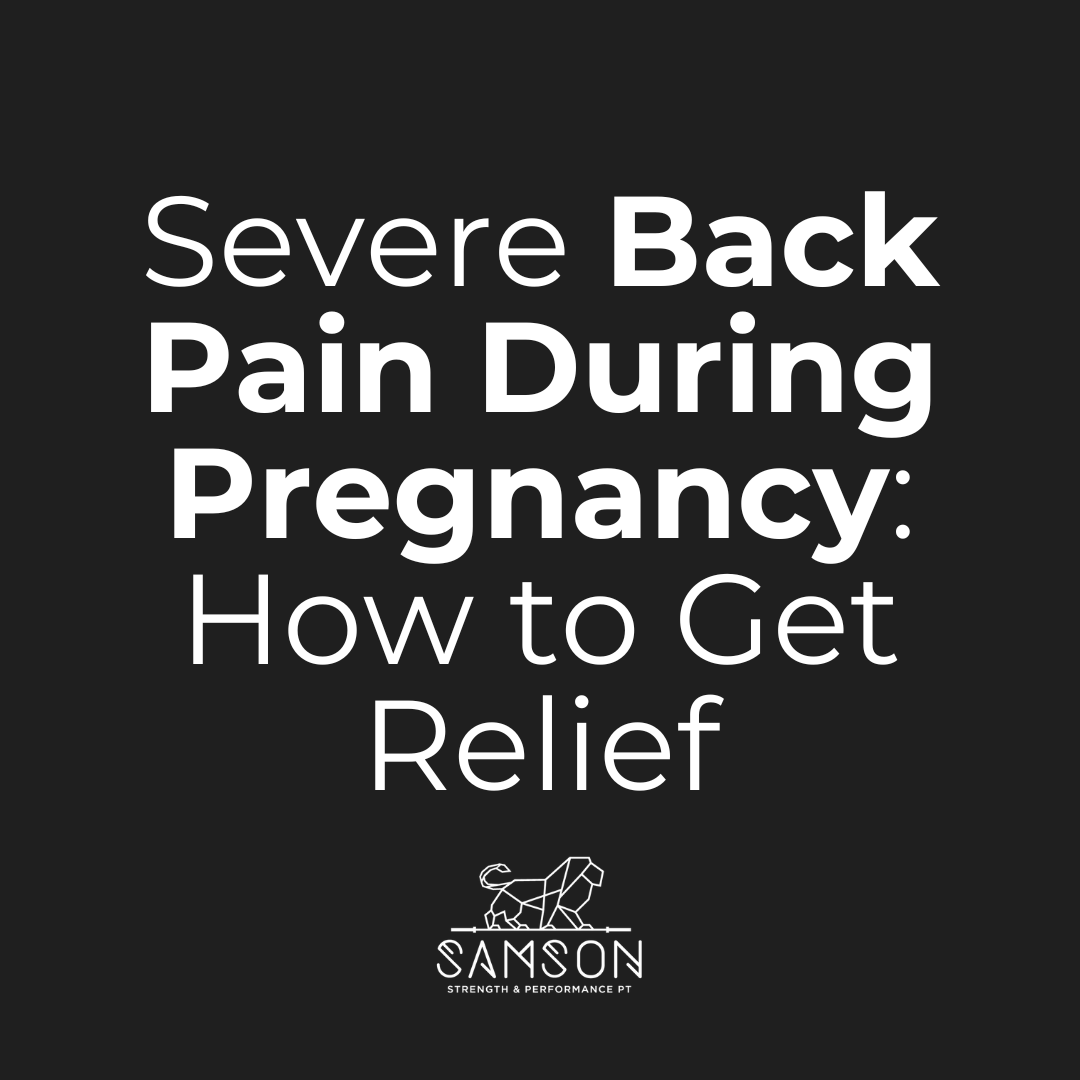Severe Back Pain During Pregnancy: How to Get Relief
Severe Back Pain During Pregnancy: How to Get Relief
One of the most common and debilitating issues that many pregnant individuals face is severe back pain.
Back pain during pregnancy can range from mild discomfort to excruciating pain, and it affects up to 70-80% of pregnant individuals.
Fortunately, over the past decade, research has shed light on various effective methods for managing and relieving this pain. In this blog, we will explore the latest findings on how to relieve severe back pain during pregnancy.
Why Does Pregnancy Cause Back Pain?
Before delving into the solutions, it is important to understand why back pain occurs during pregnancy. Several factors contribute to this discomfort:
Hormonal Changes: As the body prepares for childbirth, hormones help progress and keep pregnancy flowing. As the body gets ready for delivery, they help to prepare the ligaments and joints in the pelvis to accommodate the baby and deliver. However, this can also lead to musculoskeletal adaptations contributing to back pain.
Postural Changes: As the baby grows, the center of gravity shifts forward. To compensate, pregnant individuals often adjust their posture, which can put more strain on the muscles and ligaments in the back.
Increased Weight: The growing fetus, along with increased blood volume and amniotic fluid, adds significant weight. This additional weight can put pressure on the spine and lead to discomfort, especially in the lower back.
Muscle Weakness: During pregnancy, the abdominal muscles stretch and are therefore not in an optimal position to provide support, which can lead to poor posture and an increased risk of back pain.
Sciatic Pain: Pressure on the sciatic nerve bundle due to changes in posture, particularly in the third trimester, can cause sharp pain, tingling, or numbness that radiates from the lower back down the legs.
Evidence-Based Strategies to Relieve Severe Back Pain During Pregnancy
Physical Therapy and Exercise
Research consistently shows that physical therapy and targeted exercise can significantly reduce pregnancy-related back pain. A study published in The Journal of Pain (2019) found that structured physical therapy focusing on strengthening core muscles and improving posture can alleviate back pain by providing better support for the spine.
Pelvic Floor Physical Therapy
A growing body of research supports the benefits of pelvic floor physical therapy (PT) for managing back pain during pregnancy. The pelvic floor muscles play a crucial role in stabilizing the pelvis and supporting the spine, especially as the body changes during pregnancy. Weakness or dysfunction in these muscles can contribute to back pain and discomfort.
A study published in The Journal of Women's Health Physical Therapy (2020) found that pelvic floor PT improved muscle strength and alignment, which significantly reduced back pain in pregnant individuals. Pelvic floor PT typically includes exercises to strengthen the pelvic floor and core muscles, improve posture, and enhance stability.
Prenatal Yoga
Prenatal yoga is another highly effective method for managing back pain. A 2017 study published in Journal of Bodywork and Movement Therapies showed that regular yoga practice helped reduce back pain, improve posture, and reduce stress and anxiety. Yoga promotes flexibility, strengthens the core muscles, and encourages proper alignment, all of which are critical for reducing back pain during pregnancy.
Massage Therapy
Research from The International Journal of Therapeutic Massage and Bodywork (2020) suggests that prenatal massage therapy can help alleviate back pain. Regular massage sessions, especially targeting the lower back, can help relax tight muscles, improve circulation, and reduce muscle spasms.
Prenatal massage can also be beneficial for improving sleep, reducing stress, and enhancing overall well-being. It’s important to ensure the massage therapist is trained in prenatal techniques to avoid pressure on areas like the abdomen.
Managing Low Back Pain in the Perinatal Period
According to the clinical practice guidelines developed by Clinton et al. (2017) in The Journal of Women’s Health Physical Therapy, managing low back pain (LBP) in the perinatal period requires a multifaceted approach that targets the specific needs of the pregnant body. Key strategies from these guidelines include:
Postural correction and ergonomics: Addressing poor posture and teaching proper body mechanics is critical for alleviating low back pain. This can be achieved through education about maintaining a neutral spine while standing, sitting, and lifting.
Strengthening exercises: The guidelines emphasize the importance of strengthening the muscles of the lumbar spine, pelvis, and abdomen to provide better support for the growing uterus and reduce strain on the lower back.
Manual therapy: Gentle, hands-on techniques such as joint mobilizations and soft tissue work can be helpful for managing pain and improving mobility in the pelvis and lower back.
Movement re-education: Ensuring proper alignment and movement patterns during activities like walking, standing, and transitioning from sitting to standing can prevent unnecessary stress on the back.
Pelvic belt usage: Maternity support belts may be recommended to help support the pelvis and reduce strain on the lower back, particularly for those experiencing pelvic girdle pain, which often accompanies low back pain during pregnancy.
Relief Through Supportive Garments
The use of maternity support belts or braces has been shown to relieve pressure on the lower back and abdomen. A study in The Journal of Obstetrics and Gynecology (2020) concluded that these garments significantly reduced pain intensity and improved mobility in pregnant individuals with back pain when they were used with a combination of exercise and postural education.
Maternity support belts work by providing additional support to the abdomen, redistributing the weight, and alleviating strain on the back and pelvis. These are most effective when worn during periods of prolonged standing or walking.
Conclusion
Severe back pain during pregnancy can be a frustrating and debilitating condition, but with the right approach, it can be effectively managed. Evidence from recent research highlights the importance of a multifaceted approach that includes physical therapy, exercise, prenatal yoga, massage therapy, pelvic floor physical therapy, and posture correction techniques.
By incorporating these research-backed strategies into a daily routine, pregnant individuals can significantly reduce back pain and improve their overall quality of life during this exciting yet challenging time.
Always consult with your healthcare provider before starting any new treatments or exercises, especially when dealing with pregnancy-related conditions and ask for a referral to pelvic floor physical therapy if you have not been sent already.
Looking for pelvic health physical therapy in Jacksonville Beach, FL?
If you’re looking for personalized, one-on-one sessions to address your pelvic floor concerns, we provide pelvic health physical therapy services to women in the Jacksonville Beach area.
If you’re looking for providers who will listen to you and help you get to the root cause of your pelvic health concerns, we’ve got you. We’re here to help you if you’re experiencing pelvic pain, pelvic heaviness, leaking, or are pregnant/postpartum and want to continue safely working out/running/lifting during your pregnancy and get back to your sport after birth.
Get started today by booking a discovery call.

